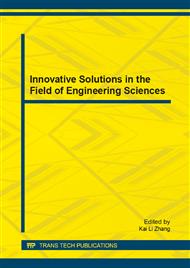[1]
B.B. Conroy and R.W. EARLE, Bone, muscle, and connective tissue adaptation to physical activity, in: Baechle, TR. Essentials of Strenght Training and Conditioning. Illinois, Human Kinetics, (1994).
Google Scholar
[2]
E.L. Cardore, M.A. Bretano; Kruel; L.F. Martins, Efeitos da Atividade Física na Densidade Mineral Óssea e na Remodelação do Tecido Ósseo,. Revista Brasileira de Medicina do Esporte, v. 11, n. 9, (2005).
DOI: 10.1590/s1517-86922005000600013
Google Scholar
[3]
M Kallinen; A Markku. Physical activity and sports injuries. An overview of common sports injuries in the elderly. Med Sports, v. 20, p.41–52, (1995).
DOI: 10.2165/00007256-199520010-00004
Google Scholar
[4]
C. Rubin; A.I. Turner; C. Mallinckrodt; C. Jerome; K. McLeod; I. Bain. Mechanical strain, induced noninvasively in the high frequency domain, is anabolic to cancellers bone, but not cortical bone. Bone, v. 30, p.445– 452, (2002).
DOI: 10.1016/s8756-3282(01)00689-5
Google Scholar
[5]
S.M. M Matsudo and V.K. R Matsudo, Osteoporose e atividade física,. Revista Brasileira de Ciências do Movimento, v. 5, n. 3, pp.33-60, (1991).
Google Scholar
[6]
M. Runge, G. Rehfeld, E. Resnieck, Treino e exercício de equilíbrio em pacientes geriátricos, J Musculoskel Interact, v. 1, pp.54-58, (2000).
Google Scholar
[7]
V. Nazarov and G. Spivak, Development of athlete's strength abilities by means of biomechanical stimulation method,. Theor Pract Phys Cul, v. 12, pp.445-50, (1985).
Google Scholar
[8]
J. Rittweger, M. Mutschelknauss, D. Felsenberg, Acute changes in neuromuscular excitability after exhaustive whole body vibration exercise as compared to exhaustion by squatting exercise, Clin Physiol Funct Imaging, v. 23, pp.81-6, (2003).
DOI: 10.1046/j.1475-097x.2003.00473.x
Google Scholar
[9]
M. Y. Cardinale and J. Lim, The Acute effects of two different whole body vibration frequencies on vertical jump performance, Med Sport v. 56, pp.287-292, (2003).
Google Scholar
[10]
J. Duchateau and R. M Enoka, Neural adaptations with chronic activity patterns in able-bodied humans, Am. J. Phys. Med. Rehab, v. 81, in press, (2002).
DOI: 10.1097/00002060-200211001-00004
Google Scholar
[11]
C. Bosco, M. Cardinale, O. Tsarpela, The influence of vibration on arm flexors mechanical power and EMG activity of biceps brachii, Eur. J. Appl. Physiol, v. 79, p.306–311, (1999).
DOI: 10.1007/s004210050512
Google Scholar
[12]
A. Kossev, S. Siggelkow, H. Kapels, R. Dengler, J.D. Rollnik, Crossed effects of muscle vibration on motor-evoked potentials, Clin Neurophysiol, v. 112 pp.453-6, (2001).
DOI: 10.1016/s1388-2457(01)00473-4
Google Scholar
[13]
M. Voight; G. Cook. Controle neuromuscular deficiente: treinamento de reativação neuromuscular. In: Prentice WE, Voight ML. Técnicas em reabilitação musculoesquelelética. Porto Alegre: Artmed. pp.91-118, (2003).
Google Scholar
[14]
S.M. Lephart. Como restabelecer o controle neuromuscular. In: Prentice WE, editor. Técnicas de reabilitação em medicina esportiva. 3ª ed. Barueri: Manole; pp.88-106, (2002).
Google Scholar
[15]
C. Bosco; M. Iacovelli; O. Tsarpela; M. Cardinale; M. Bonifazi; J. Tihanyi; M. Viru; A. De Lorenzo; A. Viru. Hormonal responses to whole body vibrations in man. Eur. J. Appl. Physiol, v. 81, p.449–454, (2000).
DOI: 10.1007/s004210050067
Google Scholar


